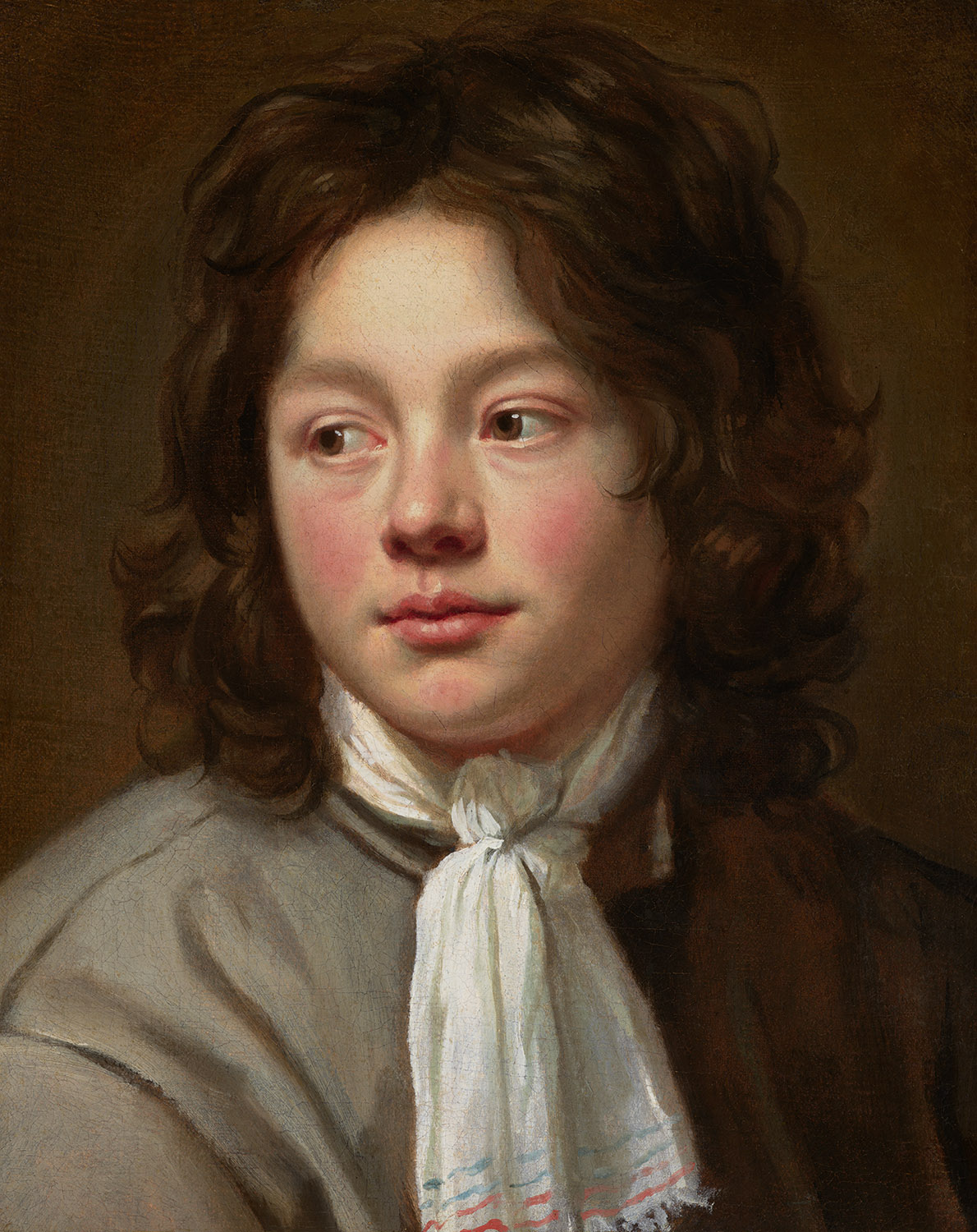This large painting is linked to other scenes of everyday Italian life that Weenix produced. Next to the ruin in the left foreground we see a small group of figures: a woman and child under a parasol. A young boy with a dog points emphatically at an approaching horseman; he may be asking for directions. Behind the horseman we see a woman with a baby in her arms and a shepherd tending his flock. The many other figures by the harbour in the right background – some of which are very small indeed – lend additional vivacity to the scene. The motif of the sitting woman appears in many paintings by Weenix; the woman under the parasol here has been found in more than ten of his works. It seems that Weenix used drawings as a basis for his paintings. For instance, the artist’s depiction of the well-known antique sculpture on the pedestal behind the woman – Equus cum Leone, a lion attacking a horse – is probably derived from his own studies of that sculpture. The same is certainly true of two immediately recognisable buildings, which he portrayed in meticulous detail. The first, in the middle of the picture, is the renowned Pyramid of Caius Cestius, dating from 12 BC, one of the best-preserved monuments of antiquity. Behind it we find the Castel Sant’Angelo (Castle of the Holy Angel), the mausoleum of Emperor Hadrian erected on the bank of the Tiber in 136 AD. The two buildings, which Weenix placed in arbitrary locations in this landscape, also appear in other works by the artist in a more or less recognisable form. In reality, the Castel Sant’Angelo is not next to a harbour with boats, and the pyramid is by Rome’s city walls, near the Porta San Paolo.
This painting powerfully demonstrates that Weenix was not only gifted in the depiction of the human form, but also an outstanding painter of livestock. The group of goats and sheep in the right foreground and the large flock further back, in the same plane as the horseman, have been convincingly portrayed. Here again, Weenix must have worked from drawings when painting these animals, since exactly the same sheep, lamb and two goats forming a cluster in the right foreground appear in a monumental painting, The calling of St. Matthew, on which he collaborated with Nicolaes Berchem (fig. 1). That painting is traditionally dated around 1657, a year later than this piece.
In this landscape, Weenix idealises the warmth and light of a summer afternoon on the Italian coast. The successive bands of light and shade are a characteristic technique of his for enlivening a scene; not only is the tableau bathed in golden, quintessentially Italian light, but the contrasts also create a compelling illusion of depth. Weenix’s expertise as a painter is manifest in such details as the small figures in the far background of the picture, under the bridge by the pyramid and next to the moored boats. In truth, each one consists of just a few strokes of paint, which only coalesce into a figure when seen from some distance. One of the most striking figures is quite possibly the little boy in the foreground with the feather in his hat. His pose has been deftly captured and his finely decorated jacket is a real eye-catcher. The realistic rendering of materials in Figures and livestock among ruins and its beautiful colouring – with pastel hues that are sometimes remarkably light – contribute to the attractiveness of the scene.

